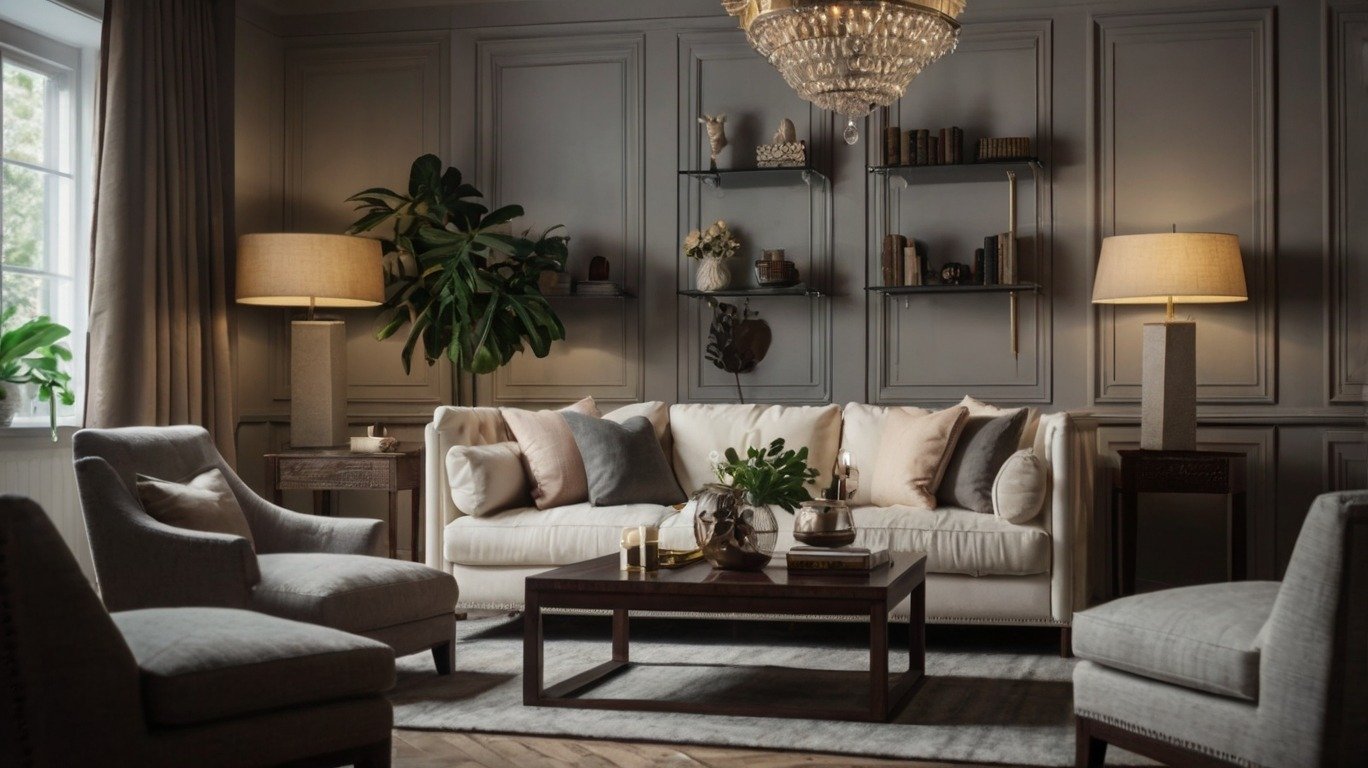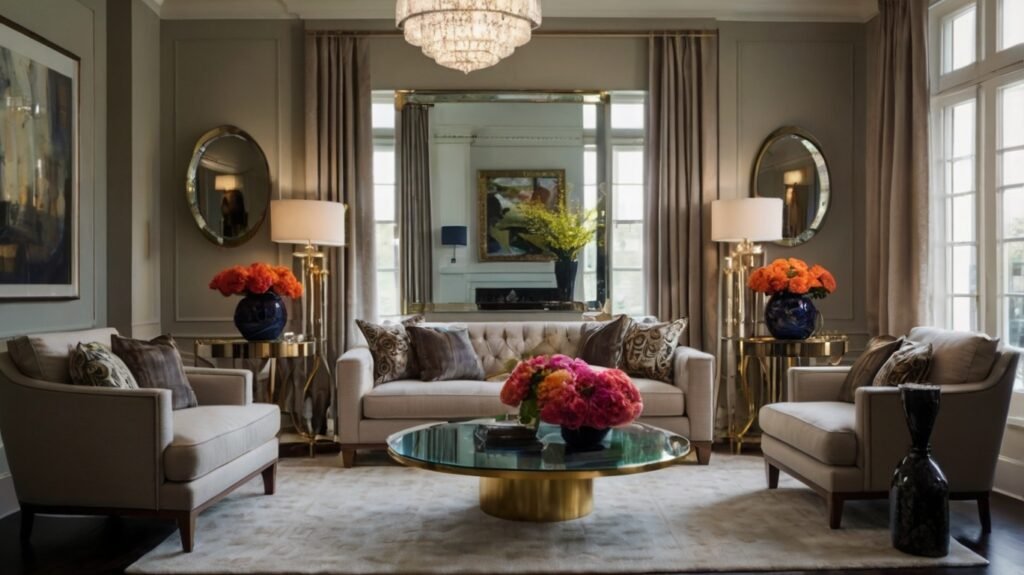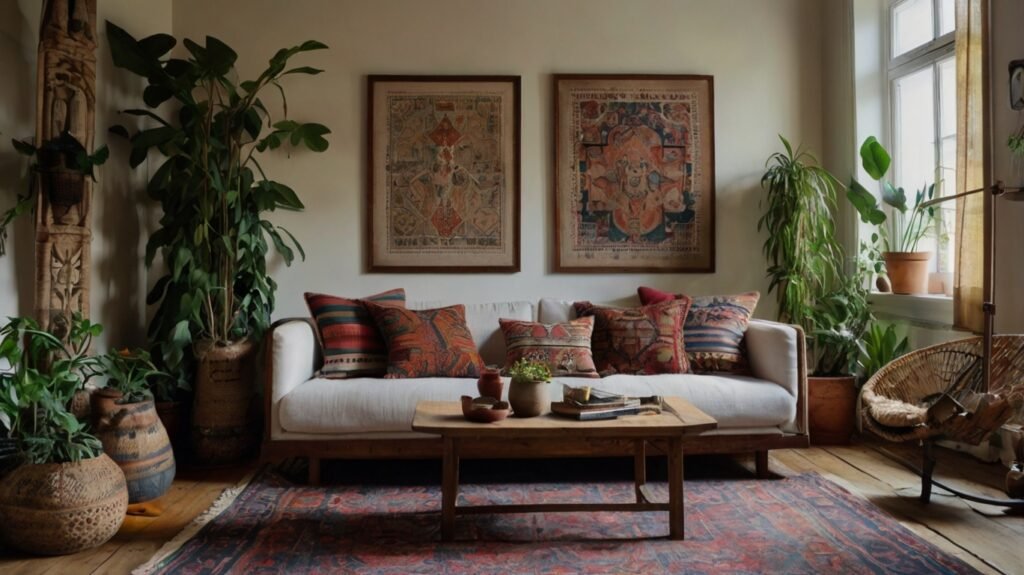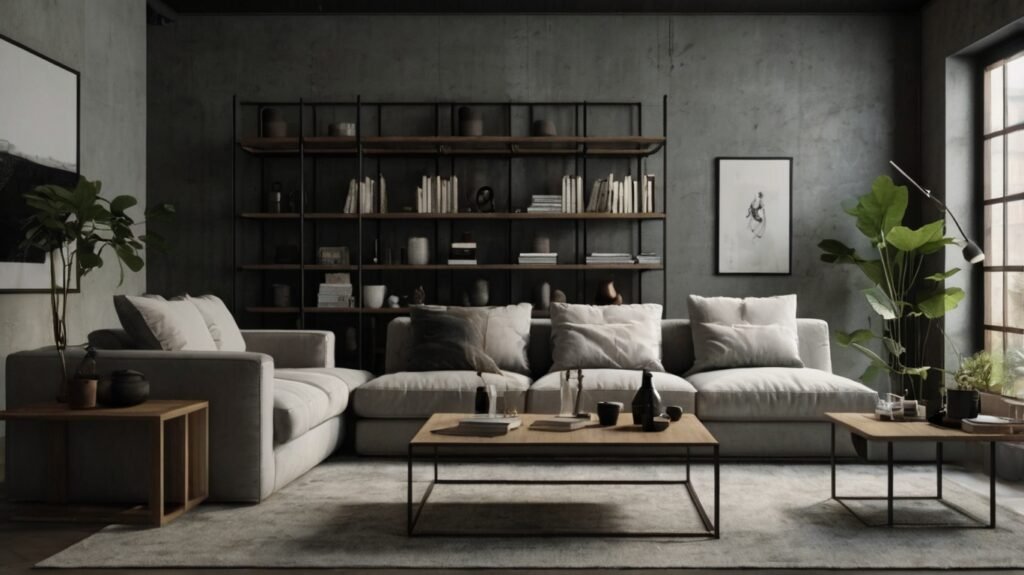Small Living Room Decorating Ideas

Decorating small living spaces presents both challenges and opportunities. The primary challenge lies in the limited square footage, which can make it difficult to fit all desired furnishings and decor without the space feeling cluttered or cramped.
However, this constraint also encourages creative solutions that might not otherwise be considered in larger areas. Small spaces naturally lend themselves to a cozy ambiance, and when thoughtfully decorated, they can become highly functional and visually appealing havens.
The goal is to maximize the potential of every inch, ensuring the room remains inviting and practical, while reflecting the personality of its inhabitants.
Understanding the Basics of Small Space Design

Maximizing vertical space is a crucial strategy in small space design. By utilizing wall space, you free up precious floor area, allowing the room to feel less cluttered and more open.
Consider installing shelves to store books, decorative items, or even kitchen essentials if it’s a multifunctional area. Hanging plants can add a touch of nature and color without consuming floor space, while a well-curated art collection can personalize the room and draw the eye upwards, enhancing the perception of height.
Maintaining an open flow is equally important to ensure the space feels welcoming and navigable. Clear walkways prevent the room from feeling crowded and allow for easy movement, which is especially significant in smaller living areas.
Prioritize decluttering to remove unnecessary items that can make the space appear chaotic. Be mindful of furniture placement; arrange pieces so that each section of the room is effortlessly accessible. Employing a minimalist approach can bolster openness, making the room feel significantly more spacious and inviting.
Furniture Selection and Arrangement
Opt for Multi-Functional Furniture

When decorating a small living room, opting for multi-functional furniture can be a game-changer. Examples include sofa beds that provide seating during the day and transform into a bed at night, ottomans with built-in storage to hide away clutter, or foldable tables that can be expanded or put away depending on the need. These versatile pieces not only help save space but also enhance the room’s functionality, making it adaptable for various activities.
Scale Matters

It’s crucial to consider the scale of furniture in relation to the room’s dimensions. Choosing pieces that appropriately fit the space is key to maintaining a balanced and comfortable environment. Avoid oversized items that can easily overwhelm the room; instead, opt for smaller, more streamlined options that complement the overall layout. This consideration ensures that the space remains open and inviting, rather than cramped and cluttered.
Smart Arrangements

The way you arrange furniture can greatly influence the perception of space in a small living room. Positioning sofas against walls can open up floor space, while strategically arranging furniture in floating configurations can create a sense of flow and depth in the room. By keeping pathways clear and ensuring the room remains accessible, you can enhance the feeling of spaciousness and foster a more welcoming atmosphere. Experiment with different arrangements to discover what works best for your unique space.
Creative Storage Solutions for Small Room
Hidden Storage

In small living rooms, the clever use of furniture with built-in storage can significantly enhance functionality without sacrificing style. Consider opting for ottomans and coffee tables that come with hidden compartments. These pieces not only serve as essential furniture but also provide additional storage space for items like blankets, remote controls, and books, keeping the area tidy and clutter-free.
Utilize Under and Over

Take advantage of often-overlooked areas by storing items under the sofa or above door frames. Utilize decorative boxes or rolling bins that can easily slide under furniture to store seasonal items or extra linens. Similarly, installing shelves above door frames can provide a perfect spot for keeping less frequently used items or displaying decorative pieces, making the most use of vertical space while maintaining an organized look.
Vertical Storage Units

Tall cabinets or bookshelves are excellent for maximizing storage without taking up too much floor space. These vertical storage solutions draw the eye upwards, creating an illusion of height in the room while offering ample space to store and display various items. Choose units that complement your room’s design style, ensuring they fit seamlessly into the overall decor.
Color Schemes and Lighting
Light and Neutral Colors

Incorporating light and neutral colors into your small living room design is a powerful strategy to create a sense of spaciousness and airiness. Soft shades such as whites, creams, and pastel tones reflect more light, making the room feel brighter and more inviting.
These hues can enhance the perception of space, making even the smallest area appear larger than it truly is. By painting the walls, ceiling, and even the furniture in these soothing shades, you establish a cohesive and open atmosphere that encourages relaxation and comfort.
Accent Walls or Pops of Color

While light colors are essential for expanding the visual dimensions of your living area, accent walls or strategically placed pops of color can infuse personality and depth without overwhelming the space. Whether through bold wallpapers, vibrant paint, or colorful artwork, these accents can create a focal point that draws attention and adds character. The key is to use these elements sparingly, ensuring they complement the overall color scheme while providing a visual “wow” factor that enlivens the room.
Lighting

Lighting plays a crucial role in enhancing the ambience and functionality of a small living room. A balanced combination of natural and artificial light can make the space feel more inviting. During the day, maximize the use of natural light by keeping window treatments minimal and opting for sheer curtains.
At night, layer various light sources such as floor lamps, wall sconces, and ceiling fixtures to create a warm and inviting atmosphere. Mirrors can be strategically placed to amplify both natural and artificial light, bouncing it around the room to enhance brightness. Choosing multi-purpose lighting options, like dimmable fixtures or adjustable lamps, offers flexibility and allows you to tailor the lighting to suit different moods and activities.
Decorative Elements to Enhance Small Spaces
Mirrors and Reflective Surfaces

Mirrors and reflective surfaces are exceptional allies in the art of making small spaces appear larger and more open. By strategically placing mirrors across from windows or light sources, you can create the illusion of depth and amplify the light within the room. Consider incorporating furniture with reflective surfaces, such as glass-topped tables or metallic accents, to further enhance this effect. These elements not only add a touch of elegance but also contribute to a more vibrant and expansive living area.
Minimalistic Approach to Decor

In a small living room, adopting a minimalist decor approach can transform the space from cluttered to chic. Choose a few standout decorative pieces that capture attention and convey your style without overwhelming the environment. This might include a statement artwork, a unique sculpture, or a textured throw. By focusing on quality over quantity, you ensure that each item has a purpose and enhances the room’s aesthetic appeal, all while maintaining an uncluttered, serene atmosphere.
Greenery

Incorporating greenery into a small space can infuse it with a sense of freshness and vitality. Plants not only improve air quality but also add warmth and color without the need for extensive floor space.
Consider using hanging plants, which draw the eye upward and save precious surface area, or placing smaller potted plants on shelves or window sills. By selecting low-maintenance options that thrive indoors, such as succulents or pothos, you can enjoy the beauty and benefits of greenery with minimal effort.
Small Living Room Styles and Inspirations
Scandinavian Simplicity

Scandinavian design is renowned for its minimalist yet warm approach, making it a superb choice for small living rooms. Focused on functionality and clean lines, this style utilizes natural materials like wood and leather, often combined with simple, neutral colors. The incorporation of cozy textiles such as throws and rugs adds warmth and texture, ensuring the space feels inviting despite its simplicity. The key is to maintain a clutter-free environment where every element serves a dual purpose, both aesthetically pleasing and practical.
Mid-Century Modern Charm

For those drawn to clean lines and organic curves, a mid-century modern style could be particularly inspiring. Characterized by sleek furniture, vibrant patterns, and a mix of traditional and non-traditional materials, this design style allows for the incorporation of bold colors without overcrowding the space.
Opt for furniture pieces with tapered legs to maintain an open floor feel, and choose iconic pieces, such as a vintage-inspired armchair or a sunburst clock, to add a statement without overwhelming the room.
Bohemian Eclectic

A small living room can still have a big personality by adopting a bohemian style that embraces an eclectic mix of patterns, textures, and colors. This look thrives on a layered aesthetic, combining textiles like throw pillows, blankets, and rugs to create a cozy and lived-in vibe.
Plants and unique artwork further enhance the style, offering personal touches and a sense of vibrancy. Emphasize individuality by mixing treasures from various cultures or eras, ensuring the result is a cohesive, warm environment that reflects your unique taste.
Urban Minimalism

Urban minimalism caters to those who appreciate modern simplicity and functionality within a small living space. This style focuses on clean lines, monochrome palettes, and a minimalistic approach to decor, resulting in a sleek and uncluttered environment.
Incorporate multipurpose furniture, such as a sofa bed or a stackable coffee table, to maximize utility without compromising aesthetic appeal. The urban minimalist style often utilizes industrial materials like metal and concrete, as well as smart storage solutions, to maintain the room’s open and airy feel.
By exploring these styles and customizing them to suit your preferences, you can transform your small living room into a functional and stylish haven, regardless of the limited space.
Conclusion
Decorating a small living room requires intentional choices that balance functionality with personal style. Each decision, from selecting furniture to choosing color schemes and lighting, plays a crucial role in shaping a space that feels comfortable yet stylish. By embracing strategies like using vertical space, opting for lighter color palettes, and incorporating personal accents, you can transform a compact room into an inviting haven that reflects your unique taste.
Remember that thoughtful curation, coupled with practical considerations, allows for a living room that efficiently meets your needs while showcasing your personality. With creativity and careful planning, a small space can offer limitless potential for comfort and style.
